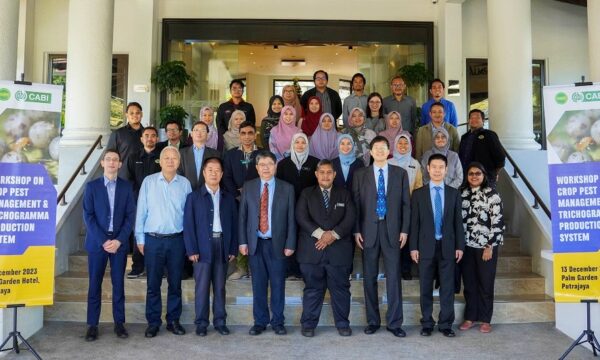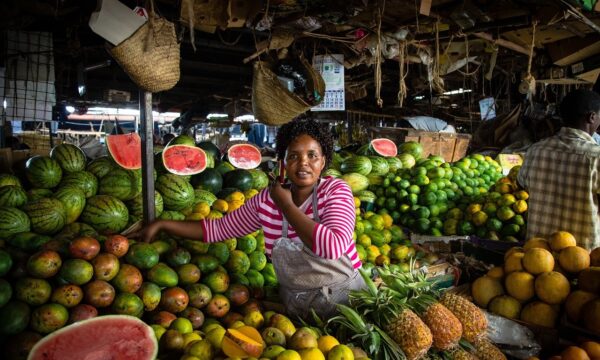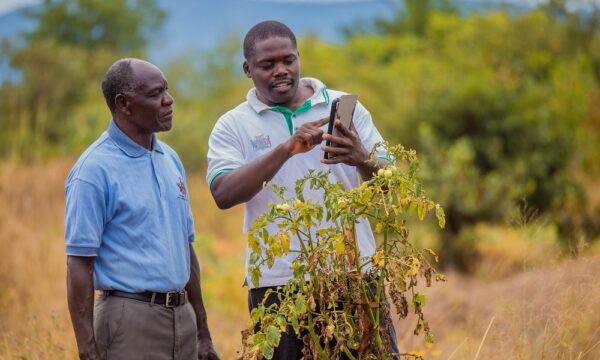“Caring for the Planet from the Ground” is the theme of this year’s World Soil Day (#worldsoilday). World Soil Day (WSD) is an annual campaign aimed at raising awareness of the critical importance of healthy soils and advocating for the sustainable management of global soil resources. In June 2013, the FAO Conference endorsed WSD and requested for it to be officially adopted at the 68th UN General Assembly. As a result, 5 December 2014 was designated as the first official WSD. So why is soil so important and why should we care about the health of it?
Soils are the foundation of all food production and food security. It is estimated that 95% of our food is directly or indirectly produced by soils. They supply crops with essential nutrients, oxygen, water and root support. The quality of the soil is directly linked to the quality of the crops produced. If a soil contains toxic pollutants, these can accumulate in the crops, presenting a threat to human health, as well as resulting in significant economic losses, as the crop would be unfit for human consumption.
Soils also provide other important ecosystem services that are vital for enabling the continued stability and resilience of the environment. They can store huge quantities of carbon, more than all above-ground vegetation, which can help to regulate atmospheric carbon dioxide emissions. The 4p1000 goal, launched at the United Nations Climate Change Conference (COP21) in Paris in 2015, aims to offset atmospheric greenhouse gas concentrations by increasing soil carbon storage in the top 30-40 cm of the soil, at a rate of 0.4% per year. Soils also act as a vast water filter and storage tank, controlling both the quality and quantity of freshwater resources. As well as storing water, soils cycle and store phosphorus, nitrogen and other essential nutrients. On top of all this, soils also host a quarter of all biodiversity on Earth.
However, this vital but fragile natural resource is under threat. In the FAO’s first State of the World’s Soil Resources report, published in 2015, it found that 33 percent of land was moderately to severely degraded, as a result of erosion, salinization, compaction, acidification and chemical pollution of soils. It highlighted that further loss of productive soils would severely impact food production and food security, increase the volatility of food prices and potentially plunge millions of people into poverty and hunger. It also presented some evidence to suggest that this loss of soil resources could be avoided through strategies that included sustainable soil management, the use of local and scientific expertise and proven technologies.
According to the report, erosion is responsible for the loss of 25-40 billion tonnes of topsoil every year, considerably reducing crop yields, as well as the ability of the soil to store and cycle water, nutrients and carbon. This could be brought down to more sustainable levels by using proven technologies such as reducing or eliminating tillage, in addition to using cover crops and crop residues to protect the soils surface. Soils experiencing nutrient deficits can be restored through the introduction of more organic matter to the soil, as well as conducting crop rotations with nitrogen-fixing crops.
The challenge for policy makers is to develop and implement effective policies that support the adoption of sustainable land use and soil management practices. The UN’s Sustainable Development Goals address soil degradation in Goal 15, which aims to, by 2030, “combat desertification, restore degraded land and soil, including land affected by desertification, drought and floods, and strive to achieve a land degradation-neutral world.” The SDG’s call for action from all countries to promote prosperity and protect the environment, although they are not legally binding. Currently, the UN Convention to Combat Desertification, established in 1994, is the only legally binding international agreement on land issues, linking environment and development to sustainable land management.
More information on World Soil Day, including events that will be taking place around the world, can be found on the FAO website.
Useful resources and further information:
FAO – Status of the World’s Soil Resources (2015)
FAO – Voluntary Guidelines for Sustainable Soil Management (2017)
Global Rainfall Erosivity Database (GloReDa)
UN Convention to Combat Desertification
CABI – Soils and Fertilizers Abstracts – a fully searchable abstracts database of internationally published research in soil science, fertilizers, soil and crop management.
CABI Bookshop – Soil Science and Hydrology
Related News & Blogs
CABI shares its expertise at ICT for Development (ICT4D) Conference
CABI has shared its expertise in digital development for improved livelihoods and greater food security at the 12th Information Communication Technology for Development (ICT4D) Conference held in Accra, Ghana. Katherine Cameron, Head of Digital Advisor…
26 March 2024





